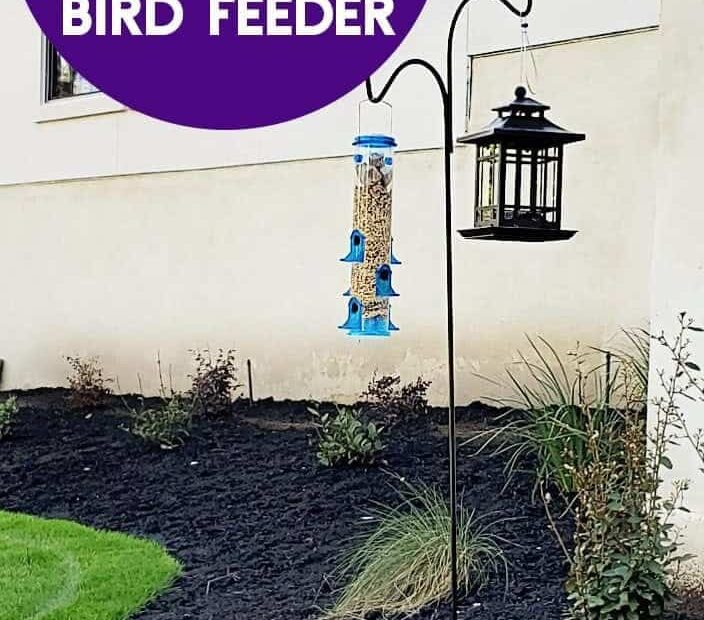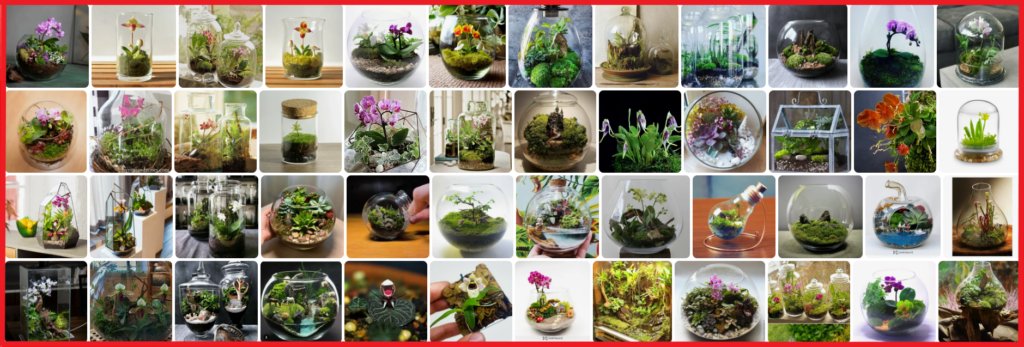The symphony of chirping birds amidst a serene morning is a sight to behold. As we scatter delicious morsels of bird seed, we envision our feathered friends joyfully pecking away while basking in the embrace of nature. Yet, alas, a common dilemma emerges: the majority of that precious nourishment seems to find its way to our feet instead of the intended beaks. Fret not, dear bird enthusiasts, for we have embarked on a quest to unlock the secrets of bird seed harmony. Join us in this article as we explore creative and practical ways to keep the avian feast airborne and ensure our winged companions never miss a delightful meal again.
Bird Seed Spillage: A Common Woe for Bird Feeders
Bird seed spillage is an all too familiar scenario for bird feeders. It can be frustrating to constantly find a mess of scattered seed beneath your feeder, not to mention the precious waste of bird food. Fortunately, there are several effective methods to keep bird seed from falling on the ground, ensuring that your feathered friends have a tidy feeding experience while saving you time and money.
One handy tip is to invest in a bird feeder with a built-in seed catcher tray. These feeders are designed with a wide, shallow tray attached to the bottom, which serves as a landing platform for the birds and catches any spillage. The tray’s generous size helps prevent seeds from scattering, providing a cleaner feeding area for both birds and humans. Consider choosing a feeder that has a removable tray for easy cleaning and maintenance.
Another practical approach is to strategically place a protective barrier around your feeder. Utilize materials such as plastic or metal panels that extend a few inches above the feeding ports. These barriers not only prevent seed from being knocked out by strong winds or aggressive birds but also deter squirrels and other pests from accessing the feeder. For an extra layer of protection, you can even attach a strip of adhesive foam padding to the underside of the barrier, creating a soft landing zone that reduces seed spillage even further.
Incorporate these features or tips to minimize bird seed spillage and maintain a clean and efficient bird feeding station:
| Features | Tips |
|---|---|
| 1. Feeders with built-in seed catcher trays | 1. Choose feeders with removable trays for easy cleaning. |
| 2. Protective barriers around the feeder | 2. Use plastic or metal panels as barriers. |
| 3. Add adhesive foam padding to reduce spillage. |
Implementing these solutions will not only keep your yard clean and organized but also ensure your feathered visitors enjoy a mess-free dining experience. So bid adieu to bird seed spillage woes and embrace a tidier bird feeding adventure!

Uncovering the Root Causes of Bird Seed Waste
Are you tired of seeing most of the bird seed you put out for your feathered friends ending up on the ground instead of in their beaks? Well, worry no more! In this post, we will delve deep into and provide you with some handy tips to keep that precious bird seed from falling to the ground.
One major reason for bird seed waste is the use of low-quality bird feeders. Birds often prefer certain types of feeders, and if your feeder doesn’t meet their needs, they might simply knock the seeds out to retrieve their favorites. To minimize this, invest in a sturdy and well-designed feeder that suits the feeding habits of the birds in your area. A feeder with perches and a tray or a hopper-style feeder can help reduce spillage and provide a comfortable feeding experience for our feathered friends.
| Features/Tips | Benefits |
|---|---|
| Adjustable perches | Allows birds of different sizes to comfortably access the bird seed, reducing waste. |
| Baffle or dome | Protects the feeder from squirrels and other pests that may cause seed spillage. |
| Seed tray or catcher | Catch and save any seeds that may fall, reducing waste and saving money. |
Another way to minimize bird seed waste is to choose the right type of bird seed. Some varieties of seeds, such as sunflower seeds, are more prone to spillage due to their size and shape. Opt for smaller seeds like millet or nyjer thistle, which are better suited for certain bird feeders and have a lower chance of being wasted. Additionally, placement of the feeder plays a crucial role. Placing it in a sheltered spot, away from strong winds or rain, can help prevent the seeds from blowing or getting wet, leading to less waste in the long run.
Remember, a little extra effort in choosing the right feeder, seed, and location can go a long way in reducing bird seed waste. By implementing these features and tips, you can create a more efficient feeding setup that both you and your feathered friends will appreciate. So, let’s keep those seeds where they belong – in the beaks of our delightful garden visitors!

Proven Techniques to Minimize Bird Seed Spillage
Bird seed spillage is a common problem that many bird lovers face when trying to feed their feathered friends. However, with some proven techniques, you can easily minimize the amount of seed that falls on the ground, ensuring that it reaches its intended recipients instead.
One effective technique is to invest in a bird feeder with a built-in seed catcher tray. These feeders are designed to catch any stray seeds that fall, preventing them from reaching the ground. Not only does this reduce wastage, but it also makes cleaning up much easier. Look for feeders with adjustable trays, so you can position them at the right height to catch any falling seed.
Another technique to minimize bird seed spillage is to choose the right type of bird feeder. Opt for feeders that have smaller openings or perches. This will discourage larger birds from accessing the seeds, as they tend to be messier eaters. Additionally, consider using feeders with adjustable baffles or cages. These can help prevent larger birds or squirrels from reaching the seed reservoir, reducing the chances of spillage. Remember to clean your bird feeders regularly to prevent the accumulation of mold or bacteria, which can harm the birds.
Effortless Solutions for Keeping Bird Seed Off the Ground
If you’re an avid bird enthusiast, you know just how frustrating it can be to constantly find bird seed scattered all over your yard or patio. Not only does it create a messy and unsightly landscape, but it also attracts unwanted pests like squirrels and rats. Thankfully, there are a few effortless solutions that can help you keep bird seed from falling on the ground and maintain a tidy feeding area for your feathered friends.
One effective solution is to invest in a bird feeder with built-in trays or platforms. These feeders are designed to catch falling seeds, ensuring that they stay off the ground. Additionally, they provide a comfortable spot for birds to perch and feed. Look for feeders with adjustable trays, allowing you to control the amount of bird seed dispensed at a time, reducing waste and minimizing the mess. For added convenience, opt for feeders that are easy to clean and refill. This way, you can effortlessly maintain the feeding area’s cleanliness while ensuring your feathered friends always have a fresh supply of food.
| Features | Tips |
|---|---|
| Easily adjustable trays | Place the feeder in a sheltered area to prevent rain from making the seed soggy. |
| Built-in platforms | Choose a feeder with a squirrel-proof mechanism to deter pesky critters. |
| Easy to clean and refill | Position the feeder at different heights to attract a variety of bird species. |
Another great solution to keep bird seed from falling on the ground is to utilize a seed catcher tray or skirt. These accessories can be easily attached to the bottom of your existing bird feeders, acting as a barrier to catch any seeds that may drop during the feeding process. Seed catchers come in various sizes, making it simple to find one that matches the dimensions of your feeder. They can be effortlessly cleaned and emptied, ensuring minimal effort and upkeep.
Furthermore, to prevent seed wastage and avoid attracting unwanted guests, consider using hulled or shelled seeds. These types of bird seed have the outer shell removed, making them less likely to scatter when birds are feeding. You can also place a large flat rock or patio stones around the base of your feeder, creating a clear feeding zone that birds will appreciate. By implementing these effortless solutions, you can enjoy a tidy, seed-free yard while providing a safe and clean environment for your beloved avian visitors.
Frequently Asked Questions
Q: Why does it seem like my bird seed always ends up on the ground instead of in the feeder?
A: Birds are wonderful but messy eaters! When they perch on the feeder, they often flick or toss seeds aside in their search for the tastiest morsels. It’s their way of playing with their food and expressing their natural behaviors.
Q: Is there a simple trick to prevent bird seed from constantly spilling out of the feeder?
A: Absolutely! One clever solution is to attach a seed catcher tray or baffle under your bird feeder. This handy invention acts as a safety net, catching any wayward seeds before they cascade onto the ground. Plus, it provides extra perching space for birds to feast comfortably.
Q: Are there any other nifty methods to minimize bird seed spills and ensure it reaches our beautiful feathered friends?
A: Certainly! Another creative technique involves placing a mesh or wire screen around the base of the feeder. This acts as a clever barrier, allowing only smaller bird beaks to access the seeds while larger, messier birds are kept at bay. It’s like a seed-serving VIP section!
Remember, keeping bird seed from plummeting to the ground not only saves clean-up time, but also ensures that our avian companions get the tasty treats they deserve without wasting a single seed. Happy birding! As we conclude this discourse on the art of keeping bird seed where it belongs — off the ground — we hope you have found inspiration in these unconventional yet effective methods. Feathers of all colors, sizes, and melodies grace our skies, but it is within our hands to make their dining experience a true delight. By implementing these ingenious approaches, we have discovered the hidden secrets that nature herself has shared with us.
Picture a world where our feathered friends frolic gracefully, picking up each morsel we lovingly set aside for them, their joyous chatter filling the air. With the techniques we have explored, this vision can become a reality, an oasis where no seed is wasted, and no bird goes malnourished.
May your ingenuity continue to blossom, your determination to prevail never waver, and your backyard transform into an avian carnival. As you embark on this journey, remember that even the tiniest acts of preservation can create a rippling effect, harmoniously connecting us to the enchanting world that dwells just beyond our windows.
So, dear reader, we implore you to embrace these simple yet brilliant ways of preventing the fall of bird seed. Unleash your creativity, adapt and modify these methods to fit your needs, and join us in fostering a beautiful symbiosis between humankind and the ethereal wonders of the avian kingdom.
Together, we can ensure that every beak is fed, every song is sung, and every morning greets us with the enchanting sight of grateful birds savoring their meals overhead. Let the seeds of wisdom take root within your heart and inspire you to build a flourishing haven for our beloved feathered companions.
Let the adventure begin, for the skies await, and a world teeming with avian harmony eagerly anticipates your artful touch.
- When to Put Weed and Feed on Lawn in Michigan - October 16, 2023
- When to Fertilize Potatoes Plants - October 16, 2023
- Can You Plant Clover in the Spring - October 16, 2023

